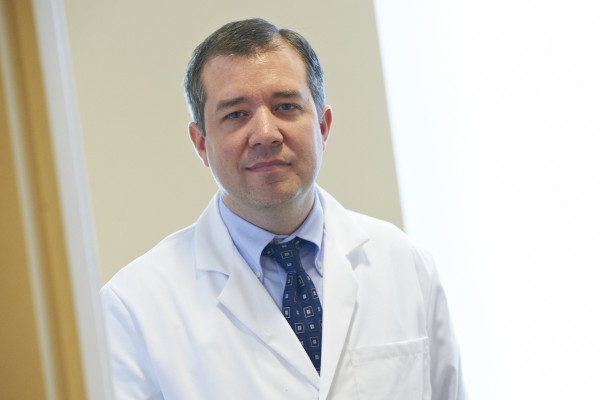Oncology
Non-Small Cell Lung Cancer
Combined Treatment Modalities for Older Patients With Advanced Non–Small Cell Lung Cancer
Overview
Older patients with advanced non–small cell lung cancer (NSCLC) differ individually in their ability to tolerate combined chemotherapy and radiation. Our featured experts note the importance of acknowledging these limitations while avoiding the undertreatment of this population.
What factors are most important when considering combination modalities for older patients with advanced NSCLC?
Bruce E. Johnson, MD
|
|
“I find that simple things such as performance status, accurate smoking history, and exercise tolerance can be very helpful clues in determining how well patients will tolerate treatment.”
The median age of patients who are diagnosed with NSCLC is approximately 70 years. However, the median age of those who are enrolled in clinical trials is often lower than that (eg, between 62 and 65 years). Thus, individuals over the age of 70 years may be underrepresented in the data that is available for treatment decision making. Another factor is that many older patients, especially those with a heavy smoking history, have underlying lung disease and/or other age-associated comorbidities that could limit the ability to tolerate treatment. So, we individualize treatment for older patients.
I find that simple things such as performance status, accurate smoking history, and exercise tolerance can be very helpful clues in determining how well patients will tolerate treatment. We are guided by physiological status, not just chronological age. Some of our 70-year-old patients, for instance, are in great shape and can tolerate chemotherapy and radiation. For others, we may try a sequential approach because we may be concerned about how well they will tolerate even a single mode of therapy; in those cases, we might just start out with chemotherapy.
Outcomes in those who can take concurrent chemotherapy and radiation are typically better than in those who receive either sequential or a single modality. However, there is a bit of a selection bias, or self-fulfilling prophecy, in play. That is, patients who receive chemotherapy alone might not do as well as others for the same reasons that raised concern about their eligibility for combined therapy.
Jeffrey Crawford, MD
|
|
“Since there are few therapies that impact cachexia very effectively, it is important to factor in this weight loss, along with functional status, when assessing older patients.”
There are 70-year-old patients who are not good candidates for combined modality therapy, and there are patients in their late 70s to 80 years of age who are candidates based on their performance status. Another important variable is weight loss, which is a marker of cachexia or sarcopenia (ie, muscle wasting). Muscle loss correlates strongly with survival in advanced-stage disease. These patients have an increased toxicity from treatment, a shorter survival, and poor outcomes. Since there are few therapies that impact cachexia very effectively, it is important to factor in this weight loss, along with functional status, when assessing older patients.
Concurrent chemoradiation can be challenging for many older patients with advanced-stage disease because of esophagitis and further loss of weight. These patients are very sensitive to weight loss having an impact on their functional status, making our preference for concurrent chemoradiotherapy difficult in many of these patients. In general, we try to individualize the treatment approach. Some patients may tolerate radiation after chemotherapy, but it is a very patient-specific decision. I think that it is very important in the stage 3 population to work with a radiation oncologist to determine the amount of radiation and whether radiation alone or in combination with chemotherapy should be given. For stage 4 patients, there may still be a role for palliative radiotherapy, and some of these patients may be candidates for other breakthrough treatments.
Gregory J. Riely, MD, PhD
|
|
“When treating older patients with NSCLC, we need to continue to apply the same rigor in pursuing biomarker-driven therapy that we do for our younger patients.”
While some oncogenic drivers may be more common in younger patients, it is important to remember that older patients can also have genetic alterations. When treating older patients with NSCLC, we need to continue to apply the same rigor in pursuing biomarker-driven therapy that we do for our younger patients. Thus, identifying mutations through a full biomarker panel is important in all of our patients.
Further, although typically we think of multimodal treatment in the context of chemotherapy and radiation, I believe that we need to take the lessons that we have learned about targeted therapies and immune checkpoint inhibitors (ICIs) and apply them to the elderly population. For example, patients with high PD-L1 scores can do very well with single-agent ICIs, with outcomes that are superior to those seen with chemotherapy. ICI monotherapy can therefore be a reasonable choice and can allow one to avoid initial chemotherapy. Thus, it is important to remember that we do not want to undertreat our older patients, as this population can derive similar benefits from chemotherapy with or without ICIs as younger patients. We should perform a careful evaluation of the patient, and, if they can tolerate a conventional regimen, we should certainly consider that.
References
Davidoff AJ, Gardner JF, Seal B, Edelman MJ. Population-based estimates of survival benefit associated with combined modality therapy in elderly patients with locally advanced non-small cell lung cancer. J Thorac Oncol. 2011;6(5):934-941. doi:10.1097/JTO.0b013e31820eed00
Decoster L, Schallier D. Treatment of older patients with advanced non-small cell lung cancer: a challenge. J Geriatr Oncol. 2019;10(4):528-533. doi:10.1016/j.jgo.2018.09.008
Driessen EJM, Bootsma GP, Hendriks LEL, et al. Stage III non-small cell lung cancer in the elderly: patient characteristics predictive for tolerance and survival of chemoradiation in daily clinical practice. Radiother Oncol. 2016;121(1):26-31. doi:10.1016/j.radonc.2016.07.025
Sakin A, Sahin S, Atci MM, et al. The effect of different treatment modalities on survival in elderly patients with locally advanced non-small cell lung cancer. Pulmonology. 2021;27(1):26-34. doi:10.1016/j.pulmoe.2019.11.007













